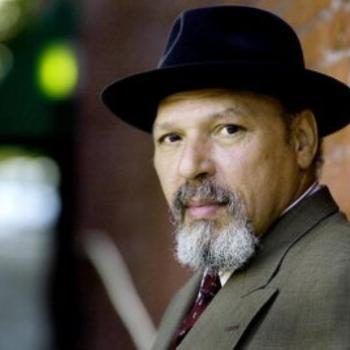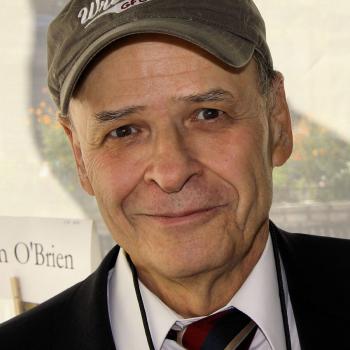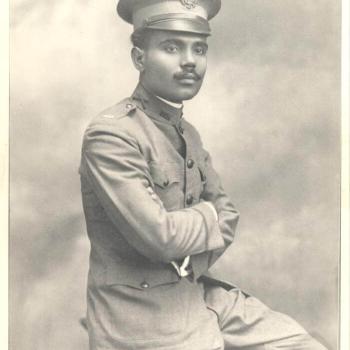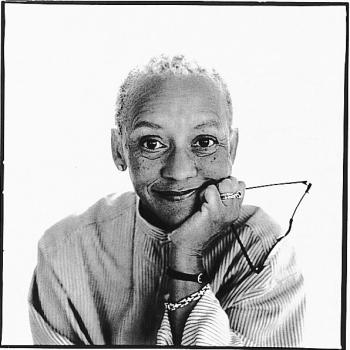
On June 1, 1980, Ted Turner introduced the Cable News Network (CNN), the first all-news television network. CNN has since provided news coverage and features 24 hours a day. News seekers can now find up-to-date coverage on CNN.com and CNNRADIO, or sign up for e-mail alerts of breaking news stories.
New technologies have made it easier than ever for people to get the news. This is in stark contrast to previous centuries, when there were fewer news sources and it could take days or even months for important news to travel long distances. Have students brainstorm a list of modern news sources, such as newspapers, radio, the Internet, television, e-mail, or text messaging. Next, have students brainstorm a list of news sources from previous centuries, such as telegrams or the town crier.
Arrange the class in small groups and assign each group one of these news sources to research. Students should find out when and where the method was first used, when people stopped using it, and so on. Then have students work together using the ReadWriteThink Interactive Timeline to create a visual timeline showing the evolution of the news over time. See also the Timeline Tool page for information and activity ideas.
CNN offers teachers a variety of tools for the classroom, including a calendar of programming events, reference tools, Web links, teaching tips, and lesson plans.
Published by the American Society of Newspaper Editors, this website offers teachers a variety of resources, including lesson plans, teaching tips, and a database of high school newspapers.
The Newseum offers online exhibits about a variety of news and journalism topics, as well as brief descriptions of some of their physical exhibits.
This site from the Journalism Education Association offers information on publishing articles and podcasts online. Included also are tips on how to promote high school newspaper websites.

Christopher Paul Curtis, born in Flint, Michigan, in 1953, has earned high praise for his first two novels. Bud, Not Buddy won both the Newbery and Coretta Scott King Medals in 2000 and several other literary awards. The Watsons Go to Birmingham-1963 was a 1996 Newbery Honor Award winner. Curtis continues to write about engaging, interesting characters, and published his most recent book, Mr Chickee's Messy Mission, in 2007.
In The Watsons Go to Birmingham-1963, Curtis examines America's stuggle for civil rights, through the eyes of a family that gets caught up in the turmoil of 1963. Have your students explore a civil rights issue by writing poetry, using the Acrostic Poems interactive. First, as a class, brainstorm a list of civil rights issues, notable figures, places, and events from American history. Examples could include Birmingham, Martin Luther King, Jr., segregation, and Rosa Parks. Then have students use the Acrostic Poems interactive to create their poems.
If you do not have access to the Internet, students can create acrostic poems without using the interactive. First, have each student select a topic for his or her poem. Next, ask them to brainstorm a list of key words that describe or remind them of their topic. Then have students use the list of words they generated to help them write their poems.
Curtis's website offers a collection of resources for teachers and young writers. There is information on his books, teachers' guides, tips for writers, and more.
This page offers an interview with author Christopher Paul Curtis, including information about Curtis's books, writing, career, and background.
This brief biography, from Kidsreads, offers a short interview with Curtis. The page also features links to reviews of Curtis' books.
This page from the ALAN Review features information about Curtis's novel in addition to an interdisciplinary unit. There are math, geography, history, and language arts activities, as well as assessment and project ideas.

Get Caught Reading is a nationwide public service campaign launched by the Association of American Publishers to remind people of all ages how much fun it is to read. May is officially Get Caught Reading month, but the celebration lasts throughout the year. Get Caught Reading is supported by hundreds of celebrities, including LL Cool J, Dylan and Cole Sprouse, and the newest addition, Olivia the Pig.
Celebrate Get Caught Reading Month with a reading-related service project. Try one of these activities with your students:
- Plan an intergenerational reading day. Invite seniors to visit your school, or arrange a trip for your students to a local senior center. Have students select books to read to adults, and invite adults to share a favorite story with students. Extend an ongoing invitation to guest readers, perhaps on a monthly basis.
- Organize a book drive to collect new or nearly new books to supplement your classroom or school library, or to donate to families or a local children's hospital.
Be sure to have a camera on hand to "catch your students reading" on film throughout the month. You can also have students organize a community "Get Caught Reading" campaign by taking photos of members of their families and community figures (firefighters, grocers, local police officers, etc.) caught reading, and creating a school display.
The Get Caught Reading website offers resources for teachers, librarians, and kids. Look for literacy fact sheets, artwork, and information on getting involved.
The Northwest Territories Literacy Council offers this reproducible guide to Get Caught Reading. Included are ideas for promoting this and other literacy programs, as well as reproducible bookmarks and posters.
Reading Connects offers this page, filled with suggestions for promoting reading at school.
KidsReads.com helps kids select books that appeal to them by offering kid-friendly reviews and information about children's books and authors. The information is searchable by author, series, and special features. The companion site Teenreads.com focuses on young adult literature.

Since 1985, March has been filled with sound as music in our schools is celebrated around the nation. Sponsored by the National Association for Music Education, the event focuses the nation's attention on the need for and benefits of quality music education programs. Schools and community groups celebrate with creative activities and events, based on a designated theme. This year's theme is "Music Inspires"
American film and theater have many examples of musical works that have been adapted from a novel or other non-musical version. Explore the effects of music on a story by examining one example with your class.
- First, brainstorm a list of such works, which could include examples such as A Christmas Carol, Les Misérables, and numerous Disney films.
- Next, after reading a story, novel, or play (or viewing a non-musical version on film), have students view the musical version.
- Then, have students discuss the differences they observed between the two versions of the story. Were the characters, setting, and main events the same? In the musical version, what role did song lyrics play in telling the story? Do both versions seem equally dramatic (or funny, or sad, etc.)? Which version do students prefer? Why?
- Finally, have students select a text that you've read in class. They should imagine that they are a songwriter working on a musical adaptation of the story. They can work alone or in groups to write lyrics to one song. They can use the tune to a song they know or compose their own music. Students should be able to explain how this song would help tell the story and which character or characters sing the song. Students can perform their songs for the class or use the interactive CD/DVD Cover Creator to design a cover for the soundtrack. More tips are available for use with this tool.
This site, from NAfME, offers information about the history of Music in Our Schools Month, as well as suggested activities, and advocacy information.
The Kennedy Center's ARTSEDGE provides tools to develop interdisciplinary curricula that integrate the arts with other subjects. Their site offers free standards-based lessons and other student and professional development materials, including Perfect Pitch, an exploration of the orchestra.
This site from the National Arts Centre offers media-rich resources for kids and their teachers and parents related to music and orchestra, including an instrument lab and music library.

LeVar Burton was born in 1957 in West Germany, while his father was in the military. He hosted 155 episodes of Reading Rainbow since its premiere in 1983 until 2006. Burton's first television appearance, though, was as Kunta Kinte, in the miniseries Roots (1977), based on the novel by Alex Haley.
Burton also appeared as a member of the cast of Star Trek: The Next Generation television series; portrayed Martin Luther King, Jr., in the film Ali; and produced and hosted the documentary The Science of Peace.
Choose complementary Reading Rainbow selections to explore a topic using fiction and nonfiction.
For example, Ruth Heller's Chickens Aren't the Only Ones and Patricia Polacco's Rechenka's Eggs both explore the subject of animals that lay eggs. On the topic of dinosaurs, you'll find William Joyce's Dinosaur Bob and His Adventures with the Family Lazardo and Aliki's Digging up Dinosaurs. After reading both books, your students can compare the selections using the interactive Venn Diagram.
Have students work individually or in small groups to write a poem, song, article, journal entry, or comic strip about the same topic. When all the pieces are completed, compile them in a book or create a bulletin board display.
The home of Reading Rainbow, with the mission to instill the love of reading & learning in children.
PBS offers a variety of resources for parents to promote literacy in young children. Resources are offered in both Spanish and English.
LeVar Burton to Educators: ‘I See You’
An interview on literacy with LeVar Burton

The 100th day of school is celebrated in schools around the country, usually in mid-February. Your class will enjoy a break from the normal routine as they practice math skills using games and activities based on the number 100. Some teachers may also include a visit from "My Hero, Zero" on day 100 (or on dates ending in zero, every tenth day, etc.).
Have your class work as a whole and in small groups to create a class "100th Day" book. First, have students break into small groups to brainstorm a list of possible topics for the book. Some possibilities include:
- 100 poems
- 100 ways to improve the Earth (our school, etc.)
- 100 people who changed history
Each group should nominate one idea to be considered by the whole class. Have the class vote on their favorite topic, brainstorm specific ideas, and then create a book based on this topic. Proudly display your book in your classroom or school library!
This page provides links to numerous Scholastic resources for a 100th-day-of-school celebration. Included are short activity ideas, a booklist, student poetry resources, links to other websites, and several lesson and unit plans.
This page includes suggestions for simple activities to celebrate the 100th day of school. Activities were submitted by teachers around the world and include a wide variety of ideas.
One Hundredth Day of School teaching ideas and activities inclusing booklists.

Born in the Hill District of Pittsburgh, Pennsylvania, August Wilson went on to become one the most significant American playwrights of the 20th Century. The only African American at his high school, Wilson was eventually driven out by threats; his family suffered the same fate when they moved out of the Hill District to a white working-class neighborhood in Pittsburgh.
Wilson was the cofounder of the Black Horizon Theater Company in Pittsburgh. He is most famous for his collection of ten plays-the Pittsburgh Cycle-that, decade by decade, chronicle a portrait of African American experience in the 1900s. Two of those plays, Fences and The Piano Lesson, earned him Pulitzer Prizes in Drama. Wilson died in 2005 and is currently the only African American to have a Broadway theater named after him.
Taking inspiration from August Wilson's epic cycle of ten plays, each set in a different era and together representing a broad portrait of life in a particular community, work with a school or local librarian to gather a number of print and digital resources about the history of your community. Challenge students to find an event or theme that can serve as the focal point for a story set in each decade. Have the class work together to use the Timeline Tool to create a decade-by-decade record of the community's history. Then, have small groups choose one of the events/decades to develop into a play using the Drama Map as a guide.
This site is the online home for this not-for-profit organization that presents performing, visual, and education programs that celebrate the contributions of African Americans and the impact of cultural expression from Africa to the African Diaspora.
The work of Kutztown (Pennsylvania) University assistant professor Mike Downing, this site is an archive of information relating to the life and works of August Wilson.
This site offers a biography of August Wilson, plus links to all of his works currently in print.

Tim O'Brien, author of the memoir If I Die in a Combat Zone, Box Me Up and Send Me Home and short story collections and novels such as Going After Cacciato (for which he won the National Book Award) and The Things They Carried, is known as America's preeminent writer of the Vietnam War era. A veteran of the conflict, O'Brien writes about the experience of the Vietnam War and Vietnam Era with both specific realism and artful imagination. After his tour of duty in Vietnam, he enrolled at Harvard for graduate work but left to pursue an internship at The Washington Post.
Students who read Tim O’Brien’s stories, particularly The Things They Carried, are intrigued by his flexible literary concept of “truth.” He suggests that the truth of fiction, as revealed by a story, can be more true than what actually happened. After reading O’Brien’s story “A True War Story” from The Things They Carried, have students choose a powerful event from their own lives. Using the Timeline Tool, have them map out the events from real life. Then, with the emotional impact of the full story in mind, encourage them to create a fictional version that remains true to the facts of real life but moves toward O’Brien’s notion of the “story truth.”
This site offers a collection of research links about Tim O’Brien for students and a list of his works and related resources.
In this 2010 interview, Tim O’Brien discusses a number of topics related to his work and their relevance today.
Here you’ll find an audio archive and transcript of O’Brien’s talk on the challenges of writing.

Prominent political and social activist was born in Ponce, Puerto Rico on June 29, 1893 or September 12, 1891. After being educated at the University of Vermont and Harvard University and serving in the US military in World War 1, Albizu Campos became interested in the Puerto Rican independence movement, serving as the president of the Nationalist Party from 1930 until his death in 1965.
Among his accomplishments are improved labor conditions in Puerto Rico (Albizu Campos led strikes against the Puerto Rico Railway and Light and Power Company and the US sugar industry) and bringing attention to the problematic colonial relationship between the US and Puerto Rico. His theory of non-collaboration with colonial structures (such as boycotting elections and military service) made him a controversial figure in the US. He was jailed twice and was under FBI surveillance for much of his life.
Called “El Maestro” or “The Teacher” for his powerful speaking ability, Albizu Campos is the namesake of several schools in Puerto Rico, Harlem, and Chicago.
Using background information on Pedro Albizu Campos as an example, invite students to investigate the complicated histories of figures from throughout the world associated with nationalist movement. These movements, often related to histories of colonization, assert the interests of one's own nation as separate from the interests of other nations or the larger interests of all nations. Prominent nationalist figures include
Pedro Albizu Campos (Puerto Rico)
Simón Bolívar (South America)
Miguel Hidalgo (Mexico)
Ho Chi Minh (Vietnam)
Nelson Mandela (South Africa)
Mohandas Karamchand Gandhi (India)
Michael Collins (Ireland)
Let students or groups of students choose a figure from this list, or another nationalist figure of their choice. Students can conduct research through print and Internet sources and share their findings with their peers using the Bio-Cube student interactive.
This biography provides additional information about the life and accomplishments of Pedro Albizu Campos.
This entry from Stanford University provides background information on nationalism, including links to other resources.

The first recipient of the Rosa L. Parks Woman of Courage Award and a Langston Hughes Medal winner for her poetry, Nikki Giovanni prides herself on being "a Black American, a daughter, a mother, and a professor of English." She was born in Knoxville, Tennessee, in 1943, and is the author of over 30 books for both adults and children, as well as a University Distinguished Professor at Virginia Tech.
Using Nikki Giovanni's poem "My First Memory (of Librarians)" as a model, encourage students to connect memory, their senses, and the language of poetry.
Write on the board or display on an overhead projector the prompt "My First Memory (of ... )" and ask students to think of a person, place, thing, or experience for which they can recall specific early memories. Ask them to brainstorm any sensory images: sights, sounds, smells, tastes, and tactile images.
Then share "My First Memory (of Librarians)," encouraging students to take inspiration from Giovanni's structure and use of language as she reveals her feelings and attitudes toward her subject.
Featuring a wealth of resources, Nikki Giovanni's official site offers biographical information, links to essays and conversations, and multimedia content.
Nikki Giovanni's page on the Academy of American poets features biographical information and the text of some of her poems.
The Poetry Foundation page for Nikki Giovanni provides information on her life, career, and bibliography, as well as the text of several of her well-known poems.
This talk was given by Nikki Giovanni at a TEDx event.